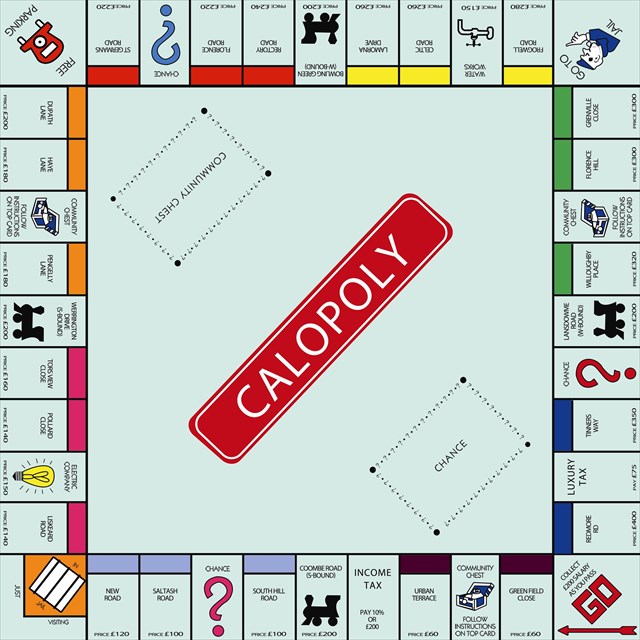Calopoly #54 - Redmoor Road Mystery Cache
Calopoly #54 - Redmoor Road
-
Difficulty:
-

-
Terrain:
-

Size:  (small)
(small)
Please note Use of geocaching.com services is subject to the terms and conditions
in our disclaimer.
CALOPOLY Series

| A series of caches set in and around Callington. You may notice one or two similarities with a popular board game. There are 40 basic caches based on the board as illustrated. The property colour caches then have the required information for a Bonus House or Bonus Hotel cache. All caches contain additional information on the log sheet ***Only the Bonus info NOT found on the colour properties, houses and hotels will be required for the Final Bonus cache.*** Each cache is a puzzle with the theme maintained throughout the Bonus Houses and Hotels, therefore there will be a requirement to solve some puzzles in the field. The majority of the caches are roadside caches and may even be attempted as a Cache and Dash, however they are not placed out in numerical order. Completing this series will require puzzle solving, planning, more puzzle solving and a bit more planning. |
This cache

Calopoly |
|
| Callington History |
Callington has been postulated as one of the possible locations of the ancient site of Celliwig, associated with King Arthur. Nearby ancient monuments include Castlewitch Henge with a diameter of 96m and Cadsonbury Iron Age hillfort, as well as Dupath Well built in 1510 on the site of an ancient sacred spring. Callington was recorded in the Domesday Book (1086); the manor had 4 hides of land and land for 30 ploughs. The lord had land for 3 ploughs with 11 serfs. 24 villeins and 14 smallholders had land for 15 ploughs. There were also one and a half square leagues of pasture and a small amount of woodland. The income of the manor was £6 sterling. In the 19th century, Callington was one of the most important mining areas in Great Britain.[citation needed] Deposits of silver were found nearby in Silver Valley. Today, the area is marked by mining remains, but there are no active mines. However, granite is still quarried on Hingston Down. The former Callington constituency, a rotten borough, elected two members to the unreformed House of Commons but was abolished by the Reform Act 1832. The town is now in the South East Cornwall constituency. St Mary's Church was originally a chapel of ease to South Hill; it was consecrated in 1438 and then had two aisles and a buttressed tower; a second north aisle was added in 1882. Unusually for Cornwall there is a clerestory; the wagon roofs are old. The parish church contains the fine brass of Nicholas Assheton and his wife, 1466. |

Additional Hints
(Decrypt)
Nyy uvag vasbezngvba naq cbffvoyr fcbvyre cvpgherf ner jvguva gur Trbpurpxre